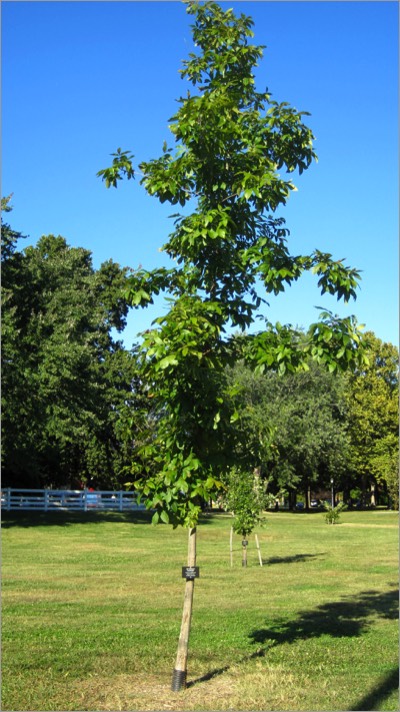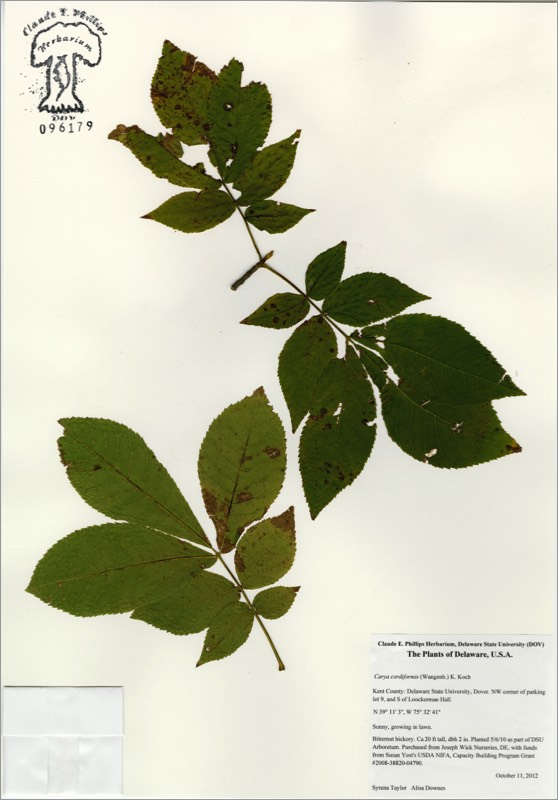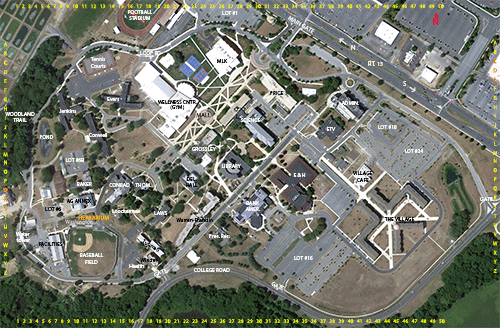Carya cordiformis

Carya cordiformis
BITTERNUT HICKORY
Juglandaceae
E. North America
Location: map coordinates V-15 (south of Loockerman Hall),
N 39°11'5'' W 75°32'42''
Planting history: planted 5/6/10. Source: Joseph Wick Nurseries, DE. (Dr. S. Yost, USDA NIFA Capacity Building Grant funds).
Description:
Native species, State Rank S5 (very common in Delaware)
BITTERNUT HICKORY
Juglandaceae
E. North America
Location: map coordinates V-15 (south of Loockerman Hall),
N 39°11'5'' W 75°32'42''
Planting history: planted 5/6/10. Source: Joseph Wick Nurseries, DE. (Dr. S. Yost, USDA NIFA Capacity Building Grant funds).
Description:
- medium-sized to tall deciduous tree
- etymology: Carya from Greek name Karya for walnut tree (Juglans regia); cordiformis for heart-shaped (the nut)
- common name from nuts that are too bitter for humans to eat
- leaf compound, with 7-9 leaflets
- monoecious (separate male and female flowers on same plant); flowers tiny, unisexual; male flowers in catkins
- nuts cylindrical, bitter; husks thin (<1/8”)
- buds bright yellow
- wood heavy and hard, used for tool handles and fuel (and formerly wooden wheels)
- common forest tree, in varied soils
Native species, State Rank S5 (very common in Delaware)


HIT REFRESH TO START LOCATION GRAPHIC